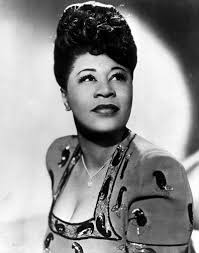
"It isn't where you came from; it's where you're going that counts."
- Ella Fitzgerald
Origin of Jazz
Jazz is a music genre that originated in the African-American communities of New Orleans, in the late 19th and early 20th centuries, with its roots being blues and ragtime. New Orleans was the perfect city for Jazz due to it being a port city. It was a meeting place for people of different ethnic groups, and a place where musicians had the opportunity to play together, learn from each other, and blend all of the wonderful elements of Jazz.
Let's JAZZ it up with some Elements!!
- Congo Square: Slaves went here to congregate and make music on Sundays when they were “off”. Everyone would congregate in this space to play horns, trumpets, etc.
- Bebop: Formed by black musicians as a form of rebellion against white infiltration in traditional jazz & swing. It was faster than traditional jazz and coincides with the evolution of black culture. Emphasizes the creativity of the black performer.
- Swing: A style of Jazz where you make the notes irregular. There were swing orchestras, swing dancing, swing bands, etc.

About "The First Lady of Song"

Ella Fitzgerald was born on April 25, 1917. Dubbed “The First Lady of Song,” she was the most popular female jazz singer in the United States for more than half a century. Throughout her life, she won 13 Grammy awards and sold over 40 million albums. Her voice was flexible, wide-ranging, accurate and ageless. Hence why she is “The QUEEN of Jazz”.
We Want the HITS!!
Social Implications
One key contribution of Jazz was its diversifying of the music industry. Jazz played a major role in the Harlem Renaissance, which was cultural and social revolution in New York during the “Jazz Age”. Like many poets and artists of this time period, jazz musicians often rebelled against the artistic norms of the day, so Jazz allowed them to create something completely their own.
Commodifications
One major highlight of Jazz is “The Cotton Club”. The Cotton Club, was a legendary nightspot in the Harlem district of New York City that for years featured prominent black entertainers who performed for white audiences. The club served as the springboard to fame money for many black musicians.
Influence on the Future
Hip hop is one genre that is influenced by jazz and is currently one of the most popular styles of this time. The amount of samples taken from jazz is extensive. Hundreds of rhythms and accompaniments are looped from various recordings of jazz musicians, creating a completely new music serving as a rhythmic backdrop for many texts delivered by various hip hop artists. An example would be Ludacris “Number One Spot”.
Author's Remarks
Jazz is filed under the category of American popular music. It is the most consequential because it gave rise to the following music genres: rhythm and blues, rock ‘n’ roll, and hip-hop, which are three of the most popular genres in human history. Artists such as Ella Fitzgerald, who always retained her joyful style and exuberant sense of swing, helped make Jazz what it was and is today. Jazz will forever be “free flowing” because it can only come from the soul.
Sources
- http://www.indigoboom.com/single-post/Jazz-Influence-on-Modern-Music
- https://jazzmovement.weebly.com/social-impact.html
- http://www.jazzinamerica.org/lessonplan/5/1/249
- http://www.ellafitzgerald.com

